 Open Access
Open Access
ARTICLE
Minimizing FWM Impact in DWDM ROF DP-DQPSK System for Optical
Wireless Communication Centre, School of Electrical Engineering, Universiti Teknologi Malaysia Johor Bahru, Malaysia
* Corresponding Author: Esra Ehsan. Email:
Computers, Materials & Continua 2023, 75(1), 1033-1050. https://doi.org/10.32604/cmc.2023.034229
Received 10 July 2022; Accepted 22 September 2022; Issue published 06 February 2023
Abstract
The demonstration of a higher data rate transmission system was a major aspect to be considered by researchers in recent years. The most relevant aspect to be studied and analyzed is the need for a reliable system to handle nonlinear impairments and reduce them. Therefore, this paper examines the influence of Four-Wave Mixing (FWM) impairment on the proposed high data rate Dual polarization–Differential Quadrature phase shift keying (DP-DQPSK) system using the Optisystem software. In the beginning, the impact of varied input power on the proposed system’s performance was evaluated in terms of QF and BER metrics. More power is used to improve system performance. However, increasing power would raise the FWM effects. Accordingly, a −10 dBm input power and the proposed system are used to reduce the impact of FWM. Additionally, a hybrid amplification method is proposed to enhance system performance by utilizing the major amplification methods of erbium-doped fiber amplifier (EDFA): semiconductor optical amplifier (SOA) and Radio optical amplifier (ROA). The evaluation demonstrates that the OA-EDFA outperformed the other two key amplification techniques of (EDFA-SOA) and (EDFA-ROA) in improving Quality factor (QF) and Bit error rate (BER) system results for all distances up to 720 km. Consequently, the method contributes to minimizing the impact of FWM. In the future, other forms of nonlinearity will be investigated and studied to quantify their impact on the proposed system.Keywords
Recently, Internet traffic has been rapidly evolving due to the developments of new technologies and applications. They aimed at improving high capacity and cost-effectiveness drivers suited for delivering and receiving optical communication over great distances via fiber [1]. According to reports, the involvement of optical transmission in short-to-medium-range wireless communications could significantly reduce power consumption [2]. Various nonlinear effects characterize optical fibers, resulting in a significant increase in optical power levels [3]. The ability of pulses to transfer information at the speed of light is one of the optical communication system’s capabilities. The transmission is carried out over long distances utilizing a Single-Mode Fiber (SMF) with a minimum attenuation rate of 0.2 dB/km for optical window ranges of 1530 to 1556 nm. Meanwhile, many experts stated that traditional end-user communication is extremely complex and costly; nevertheless, the SMF technique can effectively overcome this problem [4].
Wavelength Division Multiplexing (WDM) and its counterpart, Dense Wavelength Division Multiplexing (DWDM), are usually regarded as the most useful technology for expanding the number of channels per fiber optical and the data rate by channel. Consequently, boosting overall transmission capacity. The other method is known as Radio-over-Fiber (RoF), which depends on an analogue optical link to transmit modulated Radio frequency (RF) signals in both the downlink and uplink directions or simply between the Central Station (CS) and the Base Station (BS). RoF systems are recognized as flexible and adaptive technology suited for mobile communication, as expected in the 5G mobile communication, and a powerful tool that can be utilized for services requests up to gigabit size [5]. Therefore, RoF denotes a large capacity combined with little signal quality degradation and energy consumption.
Because of its superior transmission and reception properties, phase modulation technology is gaining favor [6]. Differential Phase Shift Keying (DPSK) modulation is used in the new 40 Gbps system. The development of a 100 Gbps optical fiber transmission system based on Quadrature Phase Shift Keying (QPSK) technology has been the subject of a recent study. Furthermore, the chromatic and the polarization mode dispersion are reduced [7]. A single carrier signal’s capacity can be doubled by polarization multiplexing, followed by polarization diversity optical coherent detection [8]. Very recently, Dual-Polarization Quadrate Phase Shift Keying (DP-QPSK) is the most exciting technology. It can transmit two QPSK signals on two polarization states of a single carrier and one of the 400 Gbps transmission options. To define digital information, QPSK uses four carrier phases [9]. Its spectrum breadth is narrower and has higher spectral efficiency [10]. For 100 Gbps DP-QPSK signals, digital coherent signal detection is now the usual reception mode. Digital coherent signal detection necessitates advanced hardware and algorithms [10,11]. Coherent detection has a residual frequency offset due to the difficulty of predicting the carrier frequency in non-cooperative communication contexts [12–14].
The main contribution of this work is to design and implement a DWDM RoF system using the proposed Dual Polarization Differential Quadratic Phase Shift Keying (DP-DQPSK) technique and tested using the Optisystem software. The investigation would consider a mitigation procedures to reduce the impact of FWM with less power consumption. In addition, a hybrid amplification method is proposed to improve the system performance and reduce the FWM impact. The rest of this paper is organized as follows: Section 2 describes what FWM is and its effect on system performance. Section 3 presents the related works to the nonlinearity effects studied. Section 4 proposes hybrid amplification to reduce FWM impact thereby improving the system performance. Section 5 evaluates the performance of the system using Optisystem software. Finally, Section 6 concludes the paper and identifies some future directions.
FWM: Nonlinear effects in optical fibers are induced by (1) variations in the medium’s refractive index with increasing light intensity and (2) inelastic scattering, as seen in Fig. 1. The Kerr effect is created by the power dependency of the refractive index. Depending on the nature of the input signal, Kerr nonlinearity shows itself in three ways: self-phase modulation (SPM), cross-phase modulation (XPM), and four-wave mixing (FWM). Inelastic scattering can generate stimulated effects at high power levels, such as Stimulated Brillouin Scattering (SBS) and Stimulated Raman Scattering (SRS). The intensity of dispersed light increases exponentially as the incoming power exceeds a certain threshold as we s [15].

Figure 1: The Non-linear effect types [15]
Among these types, the proposed system would handle that FWM process as it is triggered by the nonlinear response of bound electrons in a material to an applied light field. Both linear and nonlinear aspects are present in the medium’s polarization induced. The nonlinear susceptibilities of different orders determine the magnitude of these factors. FWM occurs in quantum mechanics when photons from one or more waves are destroyed, and new photons are produced at various frequencies, preserving net energy and momentum during the interaction. The FWM’s general concept is illustrated in Fig. 2 [15].

Figure 2: The general concept of FWM [15]
To analyze the phenomenon of FWM, firstly, the number of FWM product calculated from Eq. (1) [15]
where N represents the total number of channels. Secondly, considering the λ4 is the FWM signal that is generated from mixing the three wavelengths (λ1, λ2, and λ3) and as seen in Eq. (2).
As a result, the power of FWM is calculated via Eq. (3)
where the
Several works were proposed to handle the major issues related to different nonlinearity effects. For instance, in [16] authors proposed an investigation of FWM phenomena for the DWM system using a variation of high order dispersion up to eight order and comparing it with traditional order. An investigation was based on the channel power, effective code area, and channel spacing. The findings demonstrated a direct relation between channel power and FWM due to the serious effects of nonlinearity that depends on the light power ratio for 2 km distance. Meanwhile, reverse relation was noticed by considering the effective core area and the FWM effects. Additionally, the same precious relation was seen with the channel spacing. As a result, the proposed study helped to select the optimum choice to handle the FWM effects. However, the distance was 2 km which needs to be increased for further analysis. The researchers in [17] designed an 8 and 15-channel DWDM RoF system with a spacing of 100 GHz and a bit rate of 10 Gbps. The nonlinearity effects were studied by considering the proposed system’s SPM, XPM, and FWM effects. Results obtained indicate an increasing BER with reducing the signal quality due to the change in channel number and transmit power. Meanwhile, an XPM-based investigation concluded that for 8 and 15-channel system, the channel spacing should be raised to 130 and 150 GHz, respectively. However, the system has not considered many channels and didn’t use advanced modulation-based techniques. Additionally, the studied distance was (110) km, which needs to be raised along with the nonlinearity effects. A 4-channel DWDM system was proposed in [18] to enhance the system performance from the XPM nonlinearity effects. The investigation was carried out by selecting the appropriate power level for the proposed system. Results obtained indicate a reverse relation between dispersion and BER. However, this work didn’t consider the SRS and PMD effects along with XPM. Also, the distance selected for data transmission was about 100 km which should be improved and studied concerning the XPM phenomena. The authors in [19] suggested a methodology consisting of three techniques separately to reduce the effects of the FWM for the proposed 16-channel WDM RoF system. These methods include Circle Polarization (CP), lower input power, and DWDM over OTDM. The channel spacing used is 100 GHz, with an input power of 0 dBm, and Non-return-to-zero (NRZ) modulation format. The work aimed to perform a different method that helps in reducing the FWM effects. The system performance evaluation demonstrated that the techniques-based CP had achieved the best results. However, there is still some nonlinearity impacts which have not been considered in their study besides to the FWM that would have a great impact on the received signal and the transferred data rates. Recently, a parametric analysis for the effect of FWM in the DWDM system was proposed in [20]. The system was designed to support 64-channel system. The studied parameters were: data rate, input power, and channel spacing. Results obtained were based on the parameters of bit error rate (BER), quality factor (QF), and eye diagram (ED). These results demonstrated optimal system performance by selecting input power of −10 dBm and a small channel spacing of 50 GHz and using a data rate of 10 Gbps per channel. The main drawback of this work with the total data rate that doesn’t satisfy the latest application of 5G network.
3 Hybrid Optical Amplification (HOA) Techniques
When it comes to meeting the demands of large capacity DWDM systems, Hybrid Optical Amplifiers (HOA) are the most appropriate and generally acknowledged technology [21]. According to [22–26], high-density optical fibers (HOAs) are designed:
1. To maximize link distance while maintaining acceptable performance levels.
2. To increase the capacity of the communication link in aspects of channel capacity and the number of channels.
3. To minimize signal degradation caused by nonlinear effects present in the optical fiber.
Even though HOAs offer several advantages, certain major considerations are related.
A-EDFA and Optical Amplifier
To expand the gain spectrum of an erbium-doped fiber amplifier (EDFA), a hybrid arrangement of erbium-doped fiber amplifier (EDFA) and optical amplifier (OA) may be employed. One way to create a three-stage HOA in the L-Band is to use an SOA with two EDFAs, each of which has a gain bandwidth of 1550–1600 nm [7]. EDFA and OA are considered the most suitable amplifier to be utilized with DWDM-based system due to its feature of high gain and low noise. It is polarization-independent and can amplify optical signals in 1550 nm band or 1580 nm band.
B- EDFA and Roman Optical Amplifier
The gain spectrum of Roman Optical Amplifier (RoA) may be changed by varying the pump power values and the pumping wavelengths used in the experiment. This attribute of RoA may be leveraged to increase the gain bandwidth of an EDFA by increasing the gain bandwidth. Furthermore, compared to other optical amplifiers, the noise Fig of RoA is much lower. In RoA, it causes stimulated emission based on SRS when strong excitation light enters the optical fiber. Then, the light is amplified in a wavelength range about 100 nm longer than the excitation light wavelength. The RoA’s disadvantages include its high pump power requirements, the necessity for sophisticated gain control, noise, limited efficiency, and expensive cost [26].
C- EDFA and Semiconductor Optical Amplifier
The amplification spectrum of Semiconductor Optical Amplifier (SoA) is wide, and the distortions in amplified signals are low, allowing for low noise Fig values and the ability to perform many functions, such as wavelength conversion and optical regeneration. For embedding in 100 G, the SOA is employed. For 40 km transmission between data centers and between mobile phone base stations and data centers, light sources for optical communication in the 1.3 m band are employed. However, SOAs are necessary as pre-amplifiers when executing long-distance transmission to overcome attenuation in the communication light. In 100 G transceivers, SOAs are incorporated [10]. An SOA may be built in a small space, and its reduced operating expenses compared to an EDFA make it more cost-effective. The input light of an SOA was extremely polarization-dependent until recently, although research towards reduced polarization reliance has progressed recently [12].
As depicted in Fig. 3, to design our proposed system, the configuration for the integrated DP-DQPSK ROF DWDM system with 64-channel × 14 Gbps is divided into three parts: transmitter, medium, and receiver. For the demonstration of each part and its related parameters, it has been previously clarified in [25]. The studied parameters with respect to minimizing the nonlinearity effects of FWM are the input power for the Continuous Wave (CW) laser.
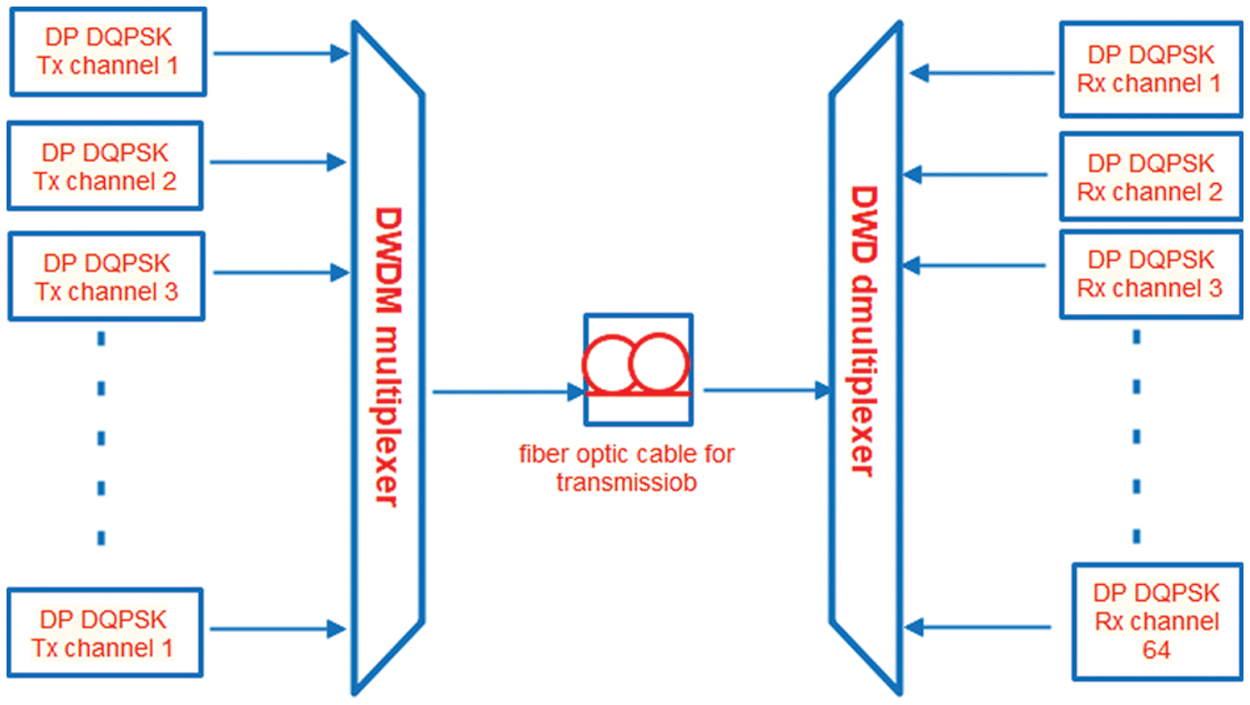
Figure 3: Schematic view for the proposed system
For instance, an investigation is carried out based on the effect of the FWM phenomenon by considering the changing of CW Power (CWP) from ranges between (−10 to 6) dBm. Besides, the significance of increasing power on the proposed system is highlighted for different incremented distances between (60–720) km. Then, a method would be implemented to handle the reduction of FWM by handling different types of optimum amplifiers. Here, three major techniques of amplification are considered: the Erbium-Doped Fiber Amplifier (EDFA), Semiconductor Optical Amplifier (SOA), and Roman Optical Amplifier (ROA). These mentioned amplifications are used in a hybrid manner to get the feasibility of each type.
This section is divided into two major parts: CWP variation results and hybrid amplification results.
The first observation was studied by considering the FWM effects regarding the variation on CWP of the laser source attached to the proposed system. The CWP variation is studied for distance increasing and evaluated by QF and BER parameters.
A- QF based Results
The QF results are illustrated in Figs. 4 and 5 for data 1 and 2, respectively. These data (1 and 2) represent the data gathered from the two polarized transfer signal aas using the technique of the DP-DQPSK. The distance up to 480 km has a convergence QF results. Also, raising the distance to 720 km increased the QF results. This is because of utilizing the loop control component in the system design that provides the required setup amplification component at each iteration to meet the 720 km of distance. Consequently, providing the proposed system reliability to be handled for long distances. In the Fig, the second observation is the quantity of the obtained QF and BER for the distance of 720 km and, as seen in Table 1, using the OA for the major proposed system. These results showed the impact of the gained values with respect to using the input power of −10 dBm selected to minimize the FWM impact (as it will be concluded); it would be raised with increasing CWL power. It is worth to mention about Table 1, there is a slight difference in the obtained values of QF between data 1 and data 2 due to the impact attenuation on the polarized transmitted signal.
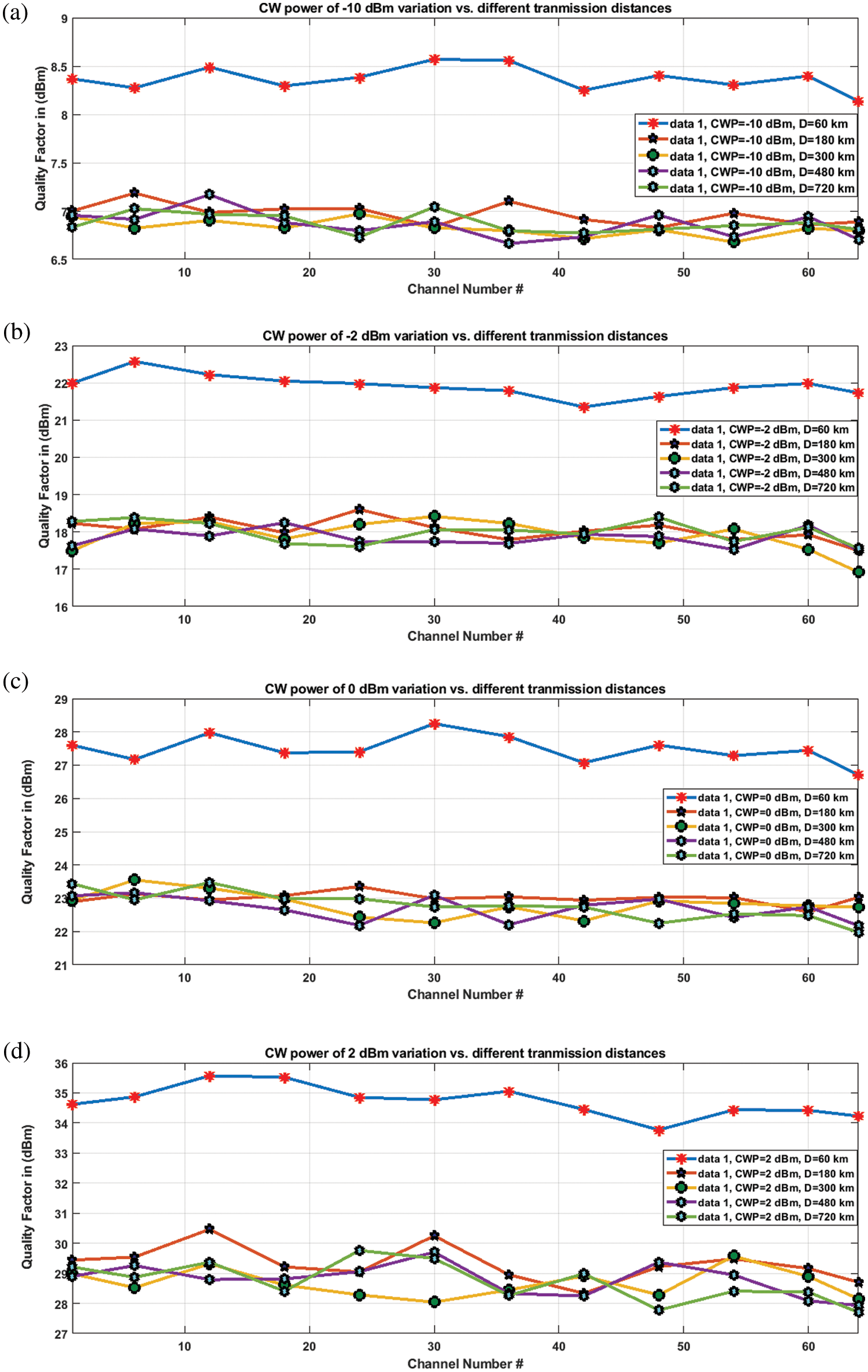
Figure 4: QF from data 1 vs. different transmission distances for values of CWP (a) −10 dBm, (b) −2 dBm, (c) 0 dBm, (d) 2 dBm
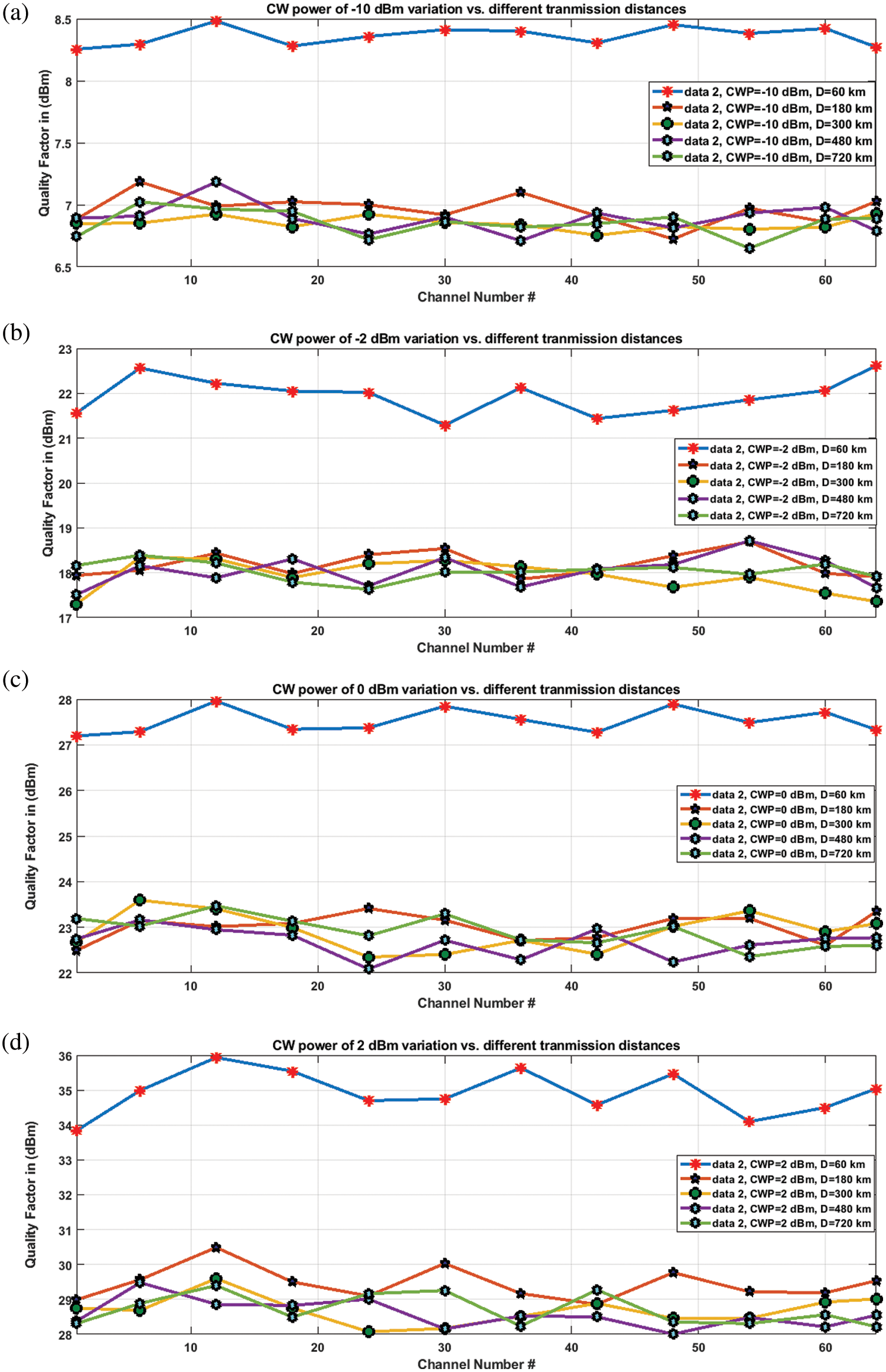
Figure 5: QF from data 2 vs. different transmission distances for values of CWP (a) −10 dBm, (b) −8 dBm, (c) −6 dBm, (d) −4 dBm

B- BER based Results
The calculated BER for data 1 and 2 are demonstrated in Figs. 6 and 7, respectively. The distance up to 480 km has a convergence BER results. However, increasing the distance to 720 km reduced the BER results. The reason is utilizing the loop control component in the system design provides the required setup amplification component at each iteration to meet the 720 km of distance. Similar to QR, reliability is given to the proposed system for long distances. As a result, the reverse relation between CWP and distance is very clear to explore. Furthermore, BER values are noticed with respect to the power of −10 dBm and for the distance of 720 km (see Table 2). The rest of this work will handle the gained values for the FWM impact.
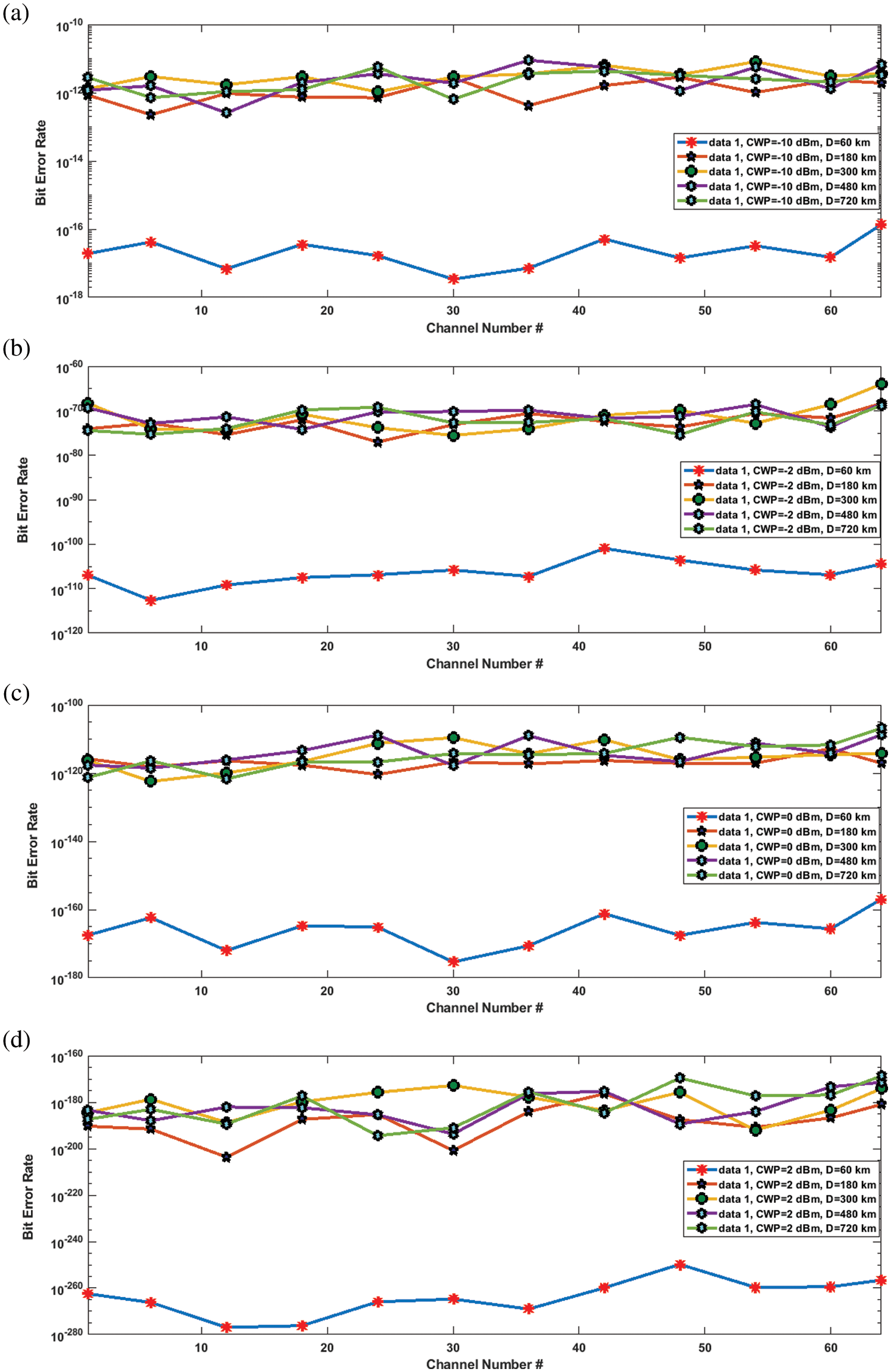
Figure 6: BER from data 1 vs. different transmission distances for values of CWP (a) −10 dBm, (b) −2 dBm, (c) 0 dBm, (d) 2 dBm
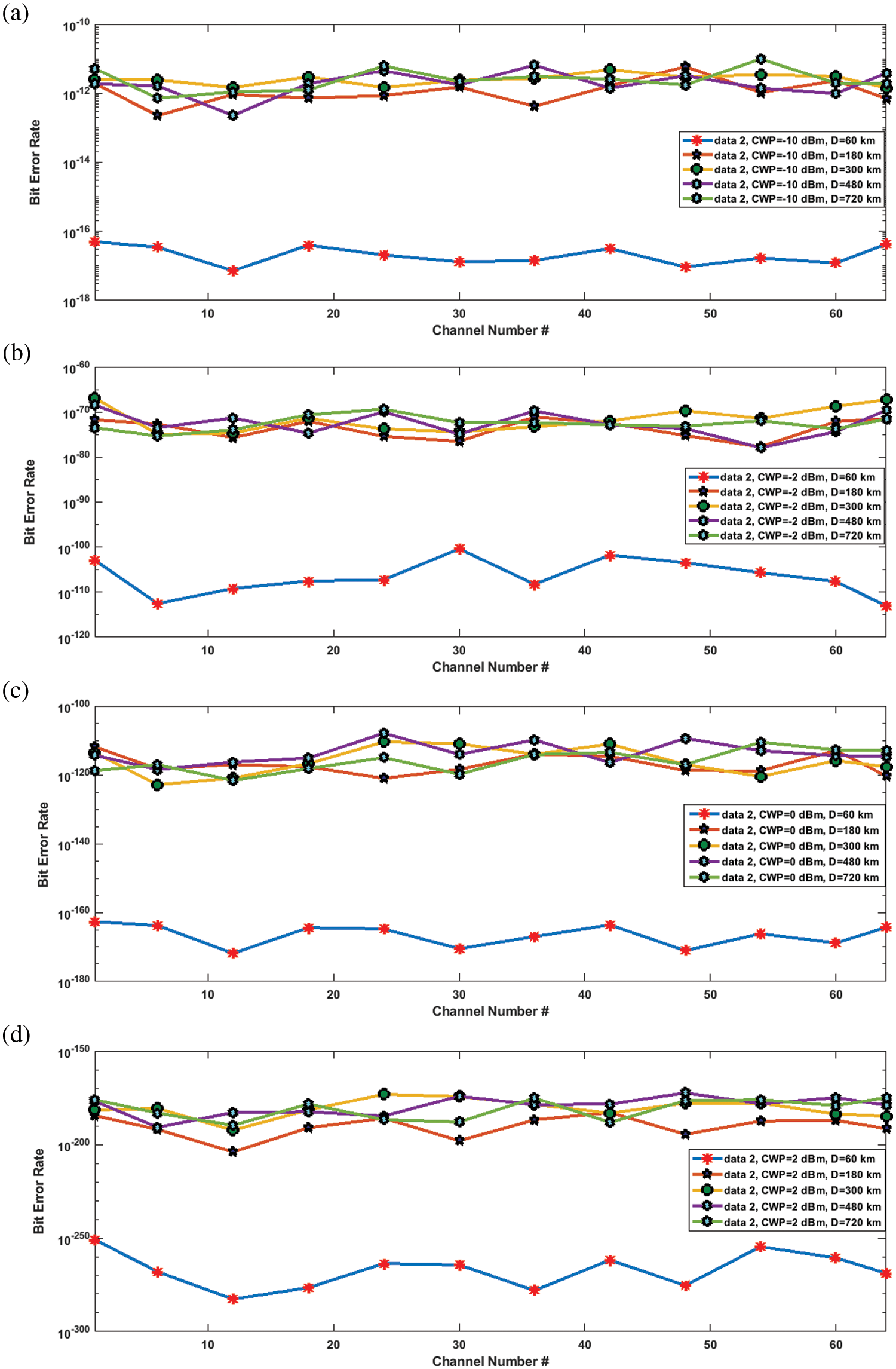
Figure 7: BER from data 2 vs. different transmission distances for values of CWP (a) −10 dBm, (b) −2 dBm, (c) 0 dBm, (d) 2 dBm

5.2 Hybrid Amplification Results
This section investigates major amplification techniques by considering three techniques of (EDFA-SoA-RoA) based amplifiers to be utilized in a hybrid manner. The techniques are evaluated and compared with the current amplification utilized with the proposed DP-DQPSK system. From the first observation, Fig. 8 illustrates the utilization of hybrid (OA-EDFA) achieved the best QF results for the three studied distances. More specifically, the (EDFA-RoA) revealed effectiveness for distances up to 300 km. On the other hand, the (EDFA-SoA) showed interesting results, but it failed at some channels for a 720 km distance. As a result, the best QF results are determined for the case of (OA-EDFA). It is considered an optimum method to reduce the impact of FWM by using the lower values of input power (−10) dBm and is suitable for the utilized techniques in the proposed system. Additionally, for a 60 km distance, all utilized hybrid methods demonstrated convergence results in the QF parameter.

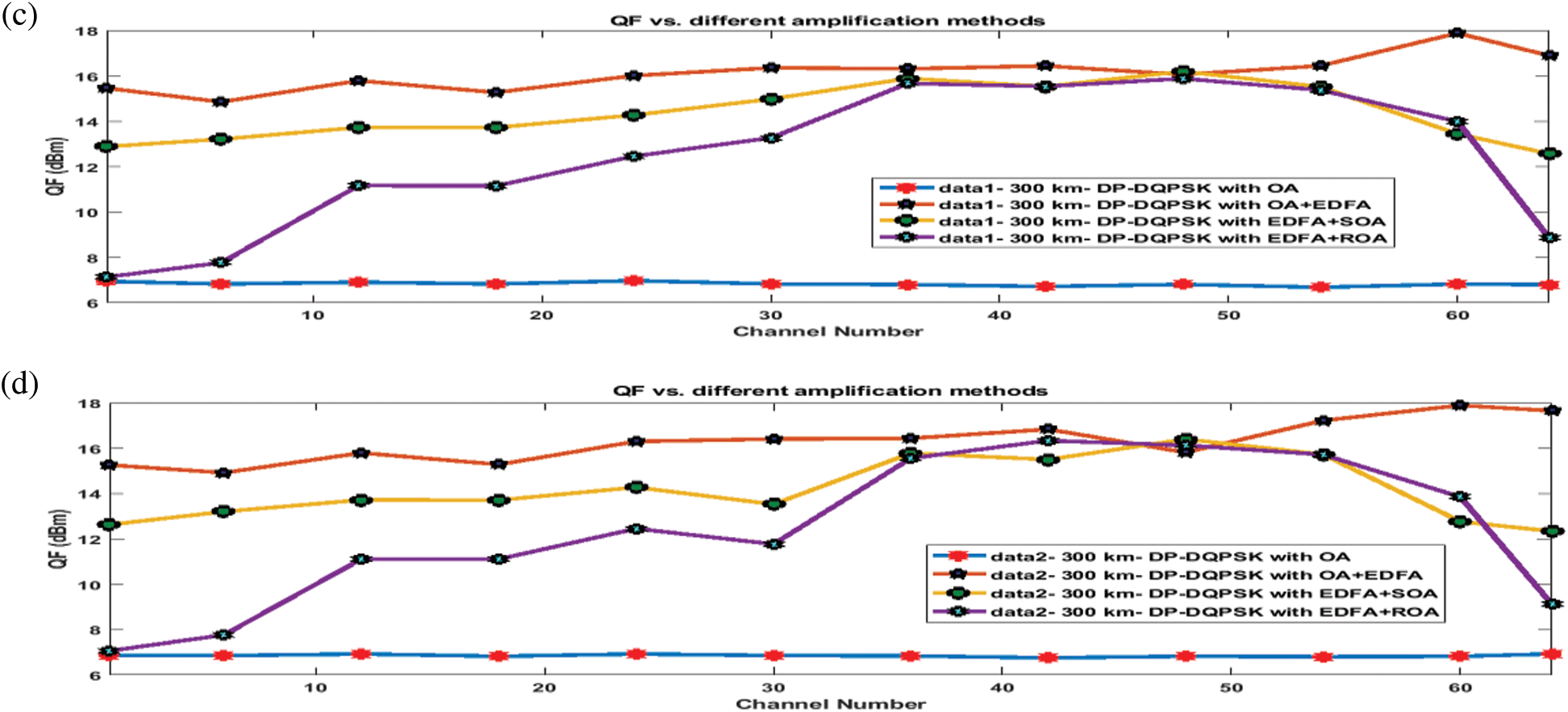
Figure 8: QF vs. different amplification methods for (a) & (b) 60 km, (c) & (d) 300 km
Fig. 9 shows the evaluation of the system for BER to address the impact of using three hybrid amplification methods.

Figure 9: BER vs. different amplification methods for (a) & (b) 60 km, (c) & (d) 300 km
It can be noticed that the (OA-EDFA) also has fewer error rates in all the tested transmission distances. Furthermore, when using the (EDFA-RoA), the system fails to perform reliable transmission for the distance up to 300 km, which indicates the worst cases due to the RoA-based amplification characteristics. Moreover, the cost function is much higher when using RoA. Lastly, Table 3 lists the gained QF and BER from the major system with FWM and the three utilized amplification techniques with CWL power of −10 dBm.

The comparison in Table 3 demonstrates that using (EDFA-OA) achieves optimum results and improves the system performance by reducing the impact of FWM. This is noticed clearly in the values of QF and BER before and after using this amplification method. Besides, based on the proposed system design and specification, it can be noticed that using the (EDFA-RoA) has failed to perform the transmission for 720 km. Meanwhile, by using the (EDFA-SoA), the system could perform well for some channels and fail for others. These observations were noticed when handling the distance of 720 km. Although, when using less distance, all the three utilized amplification provide results, but still with the same optimum method.
In this work, a DWDM RoF system using (DP-DQPSK) technique was designed and tested using the Optisystem software. The investigation considered the FWM-based nonlinearity to handle the optimum parameter selection to achieve the best system performance and different transmission distances. Additionally, a hybrid amplification method was proposed to boost the system performance (in terms of QF and BER) and reduce the FWM impact. Therefore, a proposed method reduced the impact of FWM using the input power of −10 dBm, and the performance was improved by using hybrid amplification techniques. Among three primary techniques of amplifications, the OA-EDFA showed the optimum performance in boosting the system results of QF and BER.
Acknowledgement: The authors would like to express their gratitude to the Ministry of Higher Education (MOHE) in Malaysia, Universiti Teknologi Malaysia (UTM), and Universitas Sriwijaya (UNSRI) for sponsoring the Matching Grant Research between UTM and UNSRI (R.J.130000.7309.4B571). The grant is managed by Research Management Centre (RMC) UTM.
Funding Statement: The authors received no specific funding for this study.
Conflicts of Interest: The authors declare that they have no conflicts of interest to report regarding the present study.
References
1. P. J. Winzer, D. T. Neilson and A. R. Chraplyvy, “Fiber-optic transmission and networking: The previous 20 and the next 20 years [Invited],” Optics Express, vol. 26, no. 18, pp. 24190, Aug. 2018. [Google Scholar]
2. D. Garg and A. Nain, “Next generation optical wireless communication: A comprehensive review,” Journal of Optical Communications, 2021. https://doi.org/10.1515/joc-2020-0254. [Google Scholar]
3. S. Wu, B. Siwicki, R. M. Carter, F. Biancalana, J. D. Shephard et al., “Impact of nonlinear effects on transmission losses of hollow-core antiresonant negative curvature optical fiber,” Applied Optics, vol. 59, no. 16, pp. 4988, May 2020. [Google Scholar]
4. R. Saunders, “Coherent DWDM technology for high-speed optical communications,” Optical Fiber Technology, vol. 17, no. 5, pp. 445–451, Oct. 2011. [Google Scholar]
5. A. Sharma and S. Rana, “Comprehensive study of radio over fiber with different modulation techniques–A review,” International Journal of Computer Applications, vol. 170, no. 4, pp. 22–25, Jul. 2017. [Google Scholar]
6. G. Charlet, J. Renaudier, P. Brindel, P. Tran, H. Mardoyan et al., “Performance comparison of DPSK, P-DPSK, RZ-DQPSK and Coherent PDM-QPSK at 40 Gb/s over a terrestrial link,” in Optical Fiber Communication Conf. and National Fiber Optic Engineers Conference, San Diego, California, United States, pp. 298–309, 2009. [Google Scholar]
7. A. Pilipetskii, “High capacity submarine transmission systems,” in Optical Fiber Communication Conference, Anaheim, California, United States, 2015. [Google Scholar]
8. M. Birk, P. Gerard, R. Curto, L. Nelson, X. Zhou et al., “Field trial of a real-time, single wavelength, coherent 100 Gbit/s PM-QPSK channel upgrade of an installed 1800 km link,” in National Fiber Optic Engineers Conference, Anaheim, California, United States, vol. 2, no. 3, pp. 7–18, 2010. [Google Scholar]
9. X. Hu, “Modulation and demodulation of QPSK communication system based on Matlab,” in Proc. of the Int. Conf. on Logistics, Engineering, Management and Computer Science, Shenyang, China, vol. 22, no. 25, pp. 777–778, 2015. [Google Scholar]
10. C. I. Yeo, Y. M. Song, S. J. Jang and Y. T. Lee, “Wafer-scale broadband antireflective silicon fabricated by metal-assisted chemical etching using spin-coating Ag ink,” Optics Express, vol. 19, no. S5, pp. A1109, Aug. 2011. [Google Scholar]
11. T. S. R. Shen, A. P. T. Lau and C. Yu, “Simultaneous and independent multi-parameter monitoring with fault localization for DSP-based coherent communication systems,” Optics Express, vol. 18, no. 23, pp. 23608, Oct. 2010. [Google Scholar]
12. D. Huang, T. -H. Cheng and C. Yu, “Accurate two-stage frequency offset estimation for coherent optical systems,” IEEE Photonics Technology Letters, vol. 25, no. 2, pp. 179–182, Jan. 2013. [Google Scholar]
13. E. Yamazaki, A. Sano, T. Kobayashi, E. Yoshida and Y. Miyamoto, “Mitigation of nonlinearities in fiber optic DWDM system,” Optik, vol. 185, pp. 657–664, May 2019. [Google Scholar]
14. R. Bhatia, A. K. Sharma and J. Saxena, “Improved analysis of four wave mixing with sub-plank higher-order dispersion parameters in optical communication systems,” Optik, vol. 127, no. 20, pp. 9474–9478, Oct. 2016. [Google Scholar]
15. W. El-Deeb, A. Abdelnaiem and M. Tosson, “Analysis of the nonlinear impairments on the DWDM optical communication systems,” Egyptian Journal for Engineering Sciences and Technology, vol. 22, no. 1, pp. 19–26, Feb. 2017. [Google Scholar]
16. T. Ivaniga and P. Ivaniga, “Suppression of nonlinear XPM phenomenon by selection of appropriate transmit power levels in the DWDM system,” International Journal of Optics, vol. 2019, pp. 1–8, Jun. 2019. [Google Scholar]
17. H. Ullah Manzoor, T. Manzoor, A. Hussain and M. H. Aly, “FWM mitigation in DWDM optical networks,” Journal of Physics: Conference Series, vol. 1447, no. 1, pp. 012033, Jan. 2020. [Google Scholar]
18. S. Singh, S. Singh, Q. M. Ngo and A. M. Mohammadi, “Analysis of all-optical wavelength converter based on FWM effect in HNLF for coherent 100 Gbps dual-polarized DQPSK signal,” Optical Fiber Technology, vol. 59, pp. 102323, Oct. 2020. [Google Scholar]
19. C. -H. Yeh, K. -H. Lai, Y. -J. Huang, C. -C. Lee and S. Chi, “Hybrid L-band optical fiber amplifier module with erbium-doped fiber amplifiers and semiconductor optical amplifier,” Japanese Journal of Applied Physics, vol. 43, no. 8A, pp. 5357–5358, Aug. 2004. [Google Scholar]
20. J. H. Lee, Y. M. Chang, Y. G. Han, H. Chung, S. H. Kim et al., “Experimental performance comparison for a variety of single pump, highly efficient, dispersion compensating Raman/EDFA hybrid amplifiers,” in OFC/NFOEC Technical Digest. Optical Fiber Communication Conference, Washington, DC, United States, vol. 3, no. 6, pp. 57–58, 2005. [Google Scholar]
21. G. Borraccini, S. Straullu, A. D’Amico, A. Nespola, S. Piciaccia et al., “Autonomous Raman amplifiers in multi-band software-defined optical transport networks,” Journal of Optical Communications and Networking, vol. 13, no. 10, pp. E53, Jun. 2021. [Google Scholar]
22. S. Singh and R. S. Kaler, “Flat-gain L-band Raman-EDFA hybrid optical amplifier for Dense wavelength division multiplexed system,” IEEE Photonics Technology Letters, vol. 25, no. 3, pp. 250–252, Feb. 2013. [Google Scholar]
23. M. Nebeling and H. J. Thiele, Eds., “Coarse wavelength division multiplexing,” Frontiers in Optics, vol. 4, no. 7, pp. 99–103, Oct. 2018. [Google Scholar]
24. S. Singh and R. S. Kaler, “Performance evaluation of 64 × 10 Gbps and 96 × 10 Gbps DWDM system with hybrid optical amplifier for different modulation formats,” Optik, vol. 123, no. 24, pp. 2199–2203, Dec. 2012. [Google Scholar]
25. E. Ehsan, R. Ngah and N. A. Binti Daud, “Design and implementation of DP-DQPSK DWDM transmission system by using direct detection,” Periodicals of Engineering and Natural Sciences (PEN), vol. 9, no. 4, pp. 166, Sep. 2021. [Google Scholar]
26. S. A. Rashmi and V. Sharma, “Performance evaluation of different hybrid optical amplifiers for 64× 10, 96× 10 and 128× 10 Gbps DWDM transmission system,” Int. J. Comput. Sci. Inf. Technol., vol. 5, no. 6, pp. 7199–7203, 2014. [Google Scholar]
Cite This Article
 Copyright © 2023 The Author(s). Published by Tech Science Press.
Copyright © 2023 The Author(s). Published by Tech Science Press.This work is licensed under a Creative Commons Attribution 4.0 International License , which permits unrestricted use, distribution, and reproduction in any medium, provided the original work is properly cited.


 Submit a Paper
Submit a Paper Propose a Special lssue
Propose a Special lssue View Full Text
View Full Text Download PDF
Download PDF Downloads
Downloads
 Citation Tools
Citation Tools